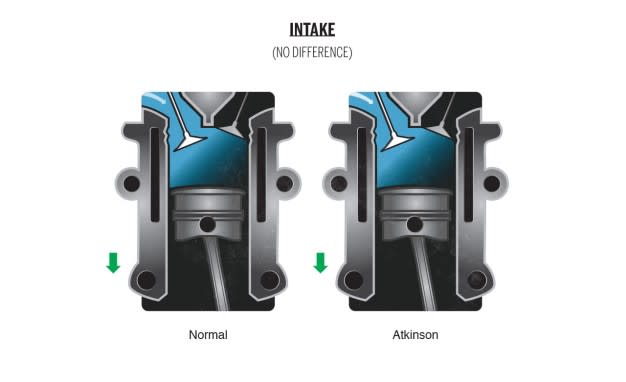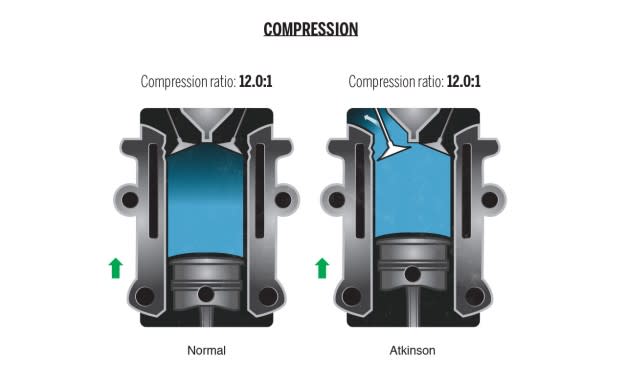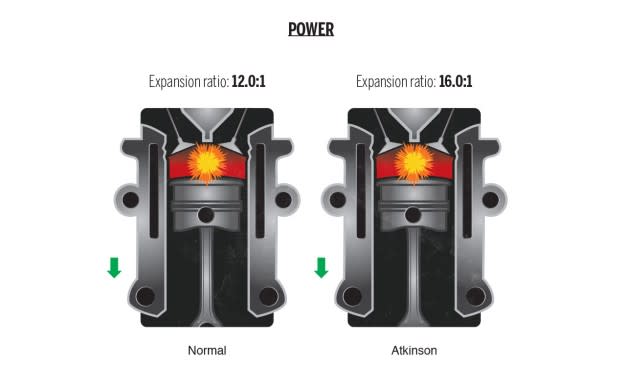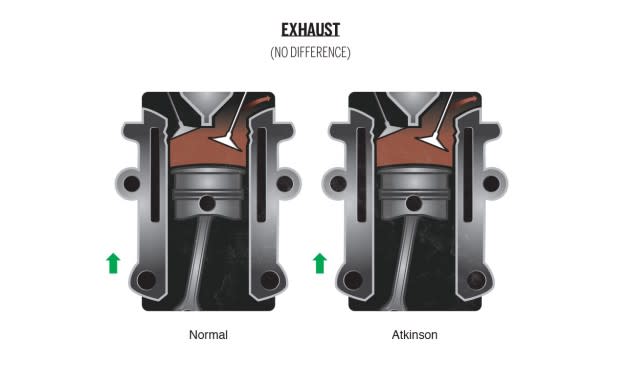The Atkinson Combustion Cycle: An Explainer

Like countless other 19th-century inventors, entrepreneurs, and tinkerers, British engineer James Atkinson sought ways to improve on the Otto four-stroke combustion engine, first produced in 1876. The engine he patented in 1882 had variable stroke lengths provided by a multilink connecting rod between the piston and the flywheel. While Atkinson's engines weren't successful, his thermodynamic cycle is still in wide use, mainly in gas-electric hybrids. The key advantage is higher efficiency than is achievable in an Otto engine, albeit with some loss of low speed output. The Atkinson cycle is ideal for hybrids because their electric motor(s) make up for the lost low-speed output.
The Atkinson cycle delays the intake valve's closing until the piston has completed 20- to 30-percent of its upward travel on the compression stroke. As a result, some of the fresh charge is driven back into the intake manifold by the rising piston so the cylinder is never completely filled (hence the low-speed power reduction). The payoff comes after ignition when the piston begins descending on the expansion (also called power) stroke. Consistent with Atkinson's original thinking, the shortened intake stroke combined with a full-length expansion stroke squeezes more work out of every increment of fuel.




In most engines, the compression ratio is set as high as the engine can stand short of detonation in pursuit of power and efficiency. Compression and expansion ratios are the same in an Otto engine. Atkinson wins on efficiency because its expansion ratio is significantly larger than its compression ratio.
American engineer Ralph Miller chimed in with another useful patent in 1957. His cycle was intended for use with two- and four-stroke engines running on gasoline, diesel, or gaseous fuels such as propane. The added ingredient is a supercharger that supplies a pressurized and intercooled intake charge to compensate for the low-speed power lost with the Atkinson approach. Miller also called for a 'compression control valve' to vent excess pressure from the combustion chamber at times. The Mazda Millenia, sold here beginning in 1994, was the most notable production car to use the Miller cycle.
This article originally appeared on Car and Driver.

 Yahoo Autos
Yahoo Autos 